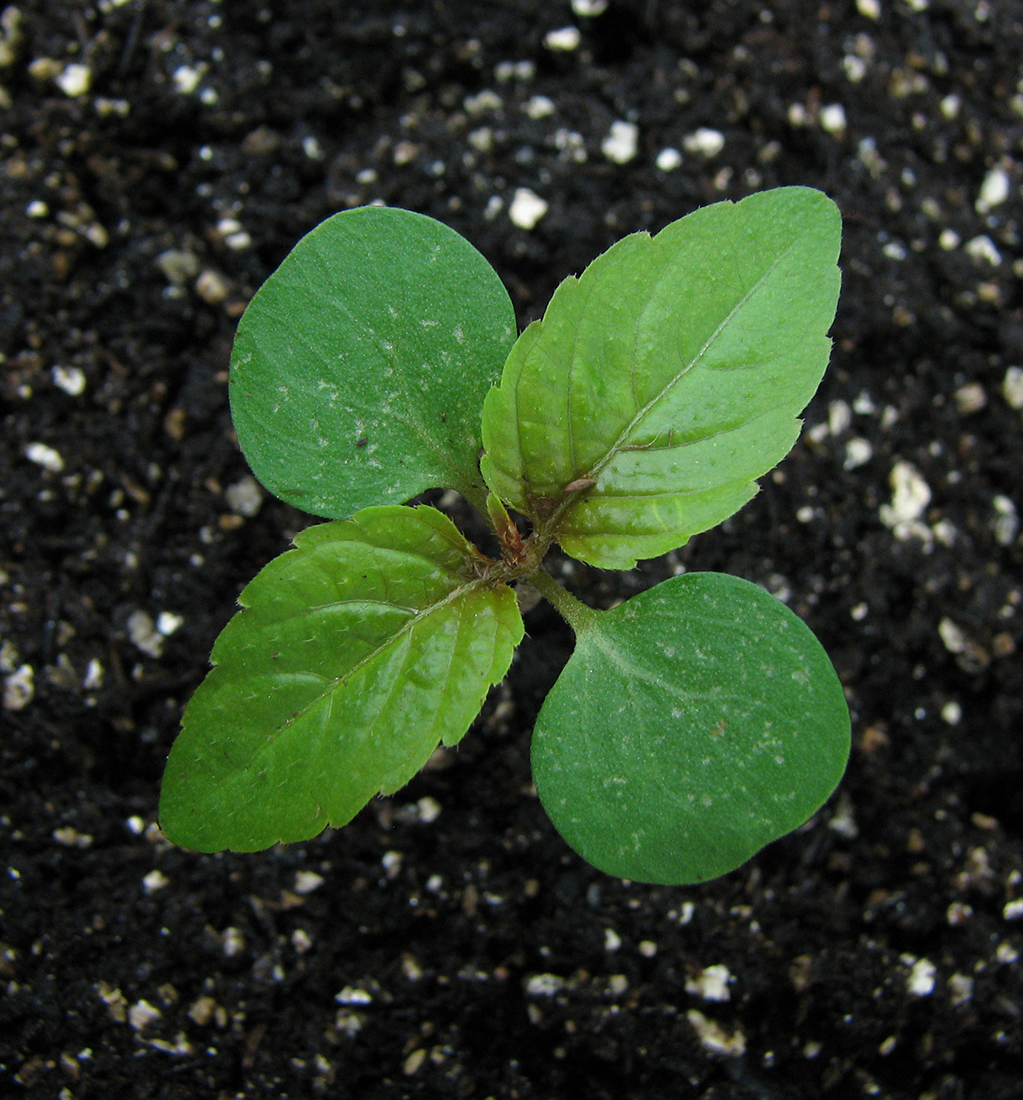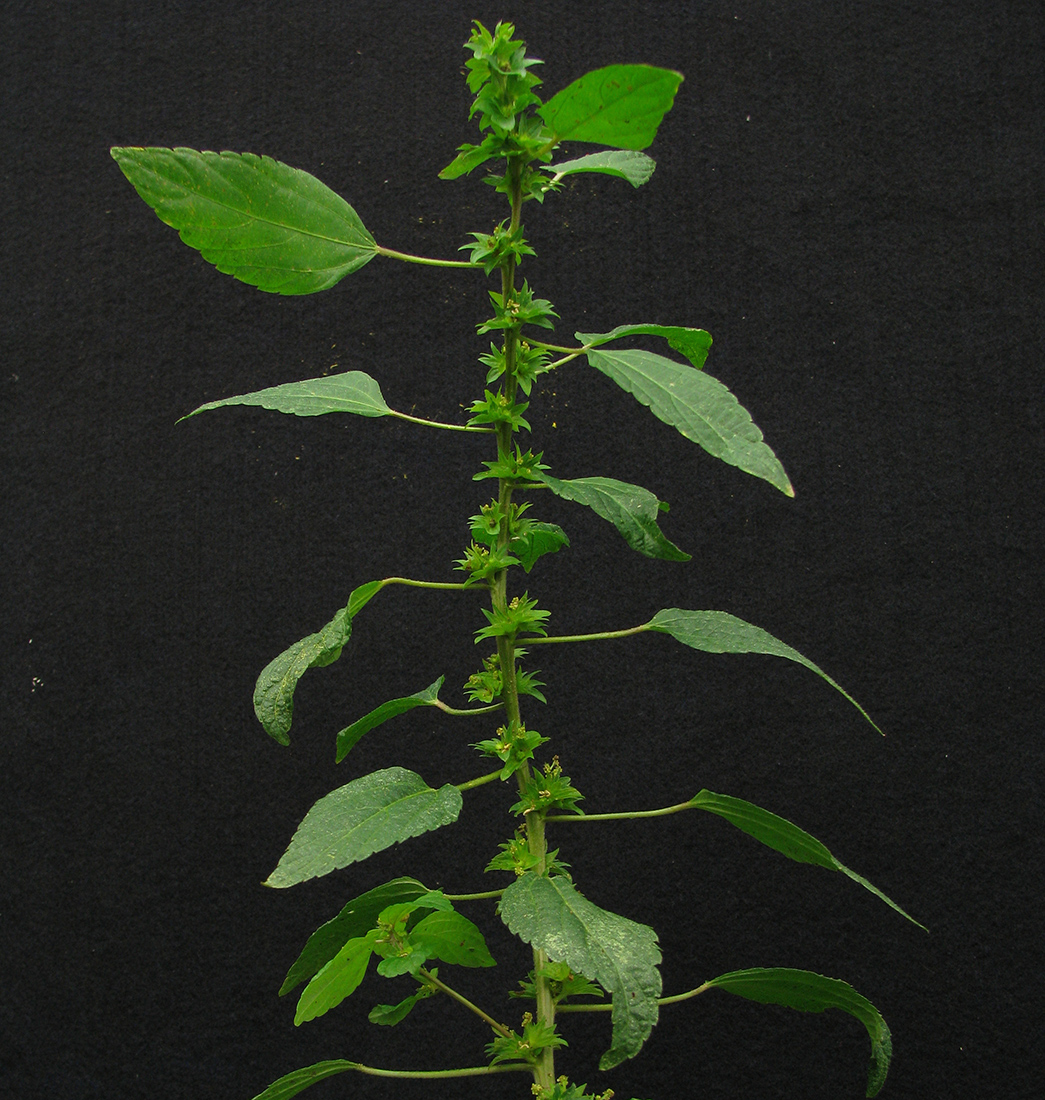Three-Seeded Mercury
- Spurge (Euphorbiaceae family):
- Acalypha rhomboidea Raf.
- EPPO code:
- ACCRH
- Other names:
- Copperleaf, rhombic copperleaf
Species information
- Lifecycle:
- Annual.
- Propagation:
- Reproduces by seed.
- Emergence:
- Three-seeded mercury is not considered an early germinating species. Typically, it emerges in late spring.
- Habitat:
- Most common in south-central Ontario, three-seeded mercury is most often found around field boundaries, near open woods. It can, however, be found in cultivated crops, ditches, and road sides.
Identification clues
Seedlings
- Cotyledons:
- Orbicular, with a slightly indented apex and clearly visible veins.
- First leaves:
- Three-sided mercury’s first leaves are opposite and ovate with round toothed margins. Leaves appear glossy and are green to copper in colour.
- Mature leaves:
- The mature leaves of three-seeded mercury have an alternate leaf orientation, and are similar in appearance to its younger leaves, only larger and with more prominent veins.
Mature plant
- Stems:
- Erect, sparsely haired to hairy.
- Flowers:
- Male and female flowers are produced separately on the same plant (monoecious). They are green and clustered in leaf axils. The plant’s seedpods are deeply tri-lobed and contain the “three seeds” referred to in its common name.
- Seeds:
- Seeds are egg-shaped, range in length from 1.5–2 mm, and are tan coloured with spots.
- Roots:
- Taproot.
Often mistaken for
I know it's not Pigweed species because three-seeded mercury has round cotyledons, a glossy bronze-green leaf colour, toothed leaf margins and clusters of greenish flowers at each axil.





Updated: January 13, 2023
Published: January 13, 2023